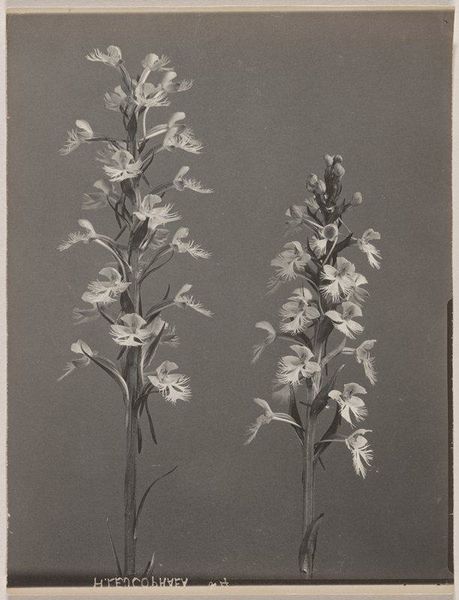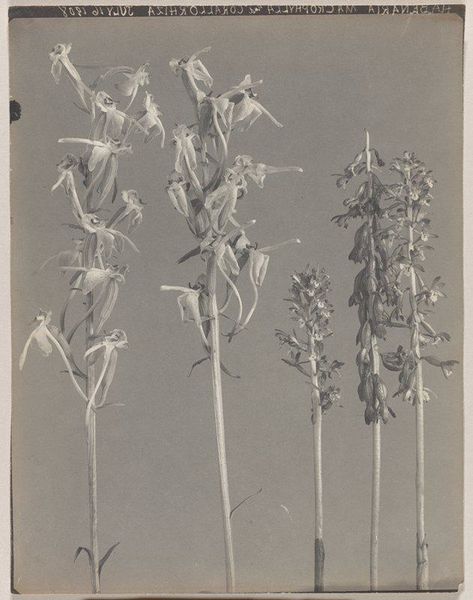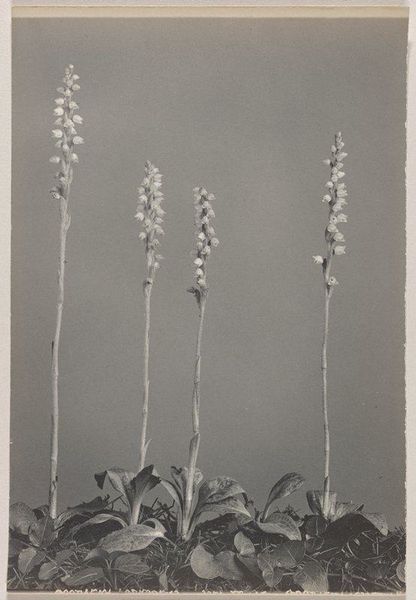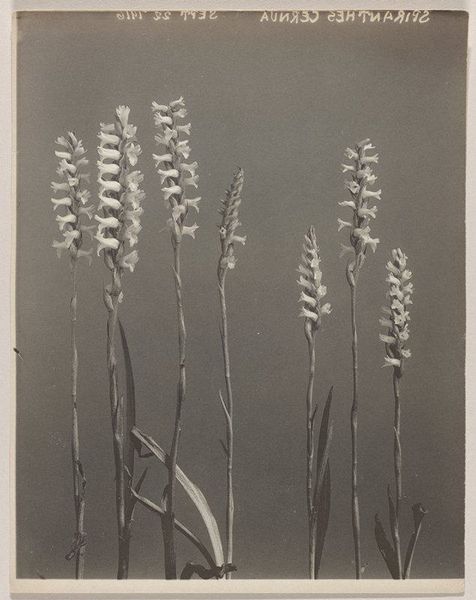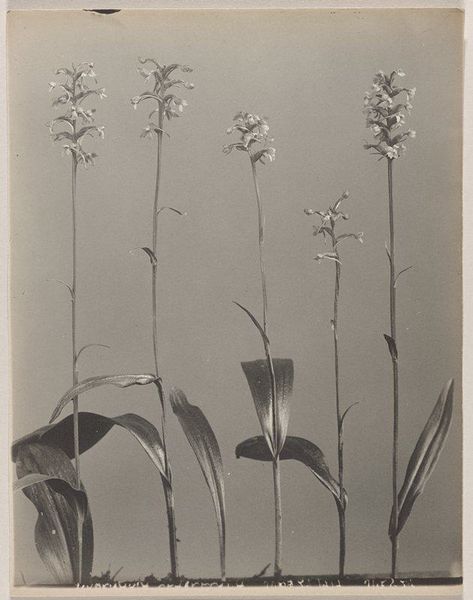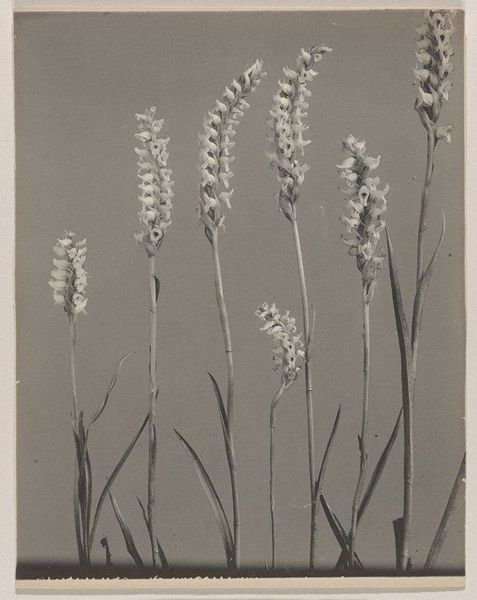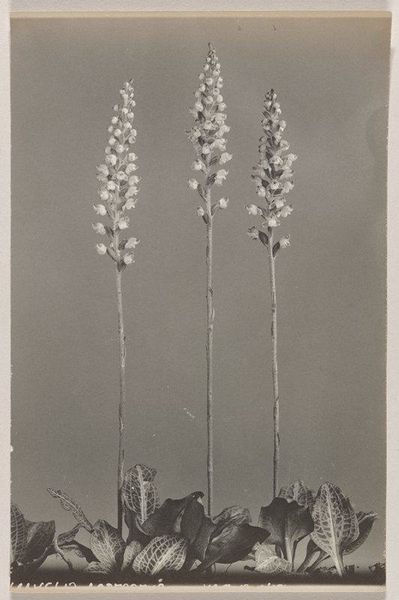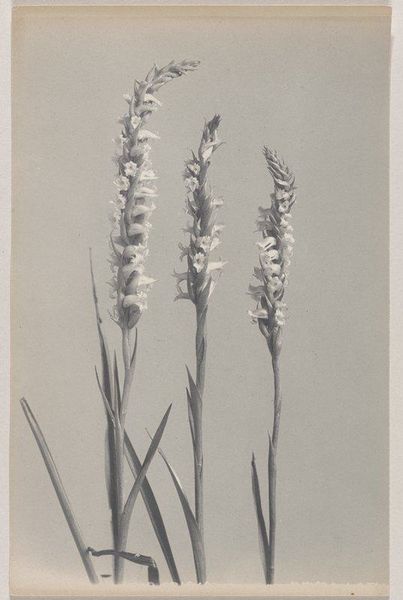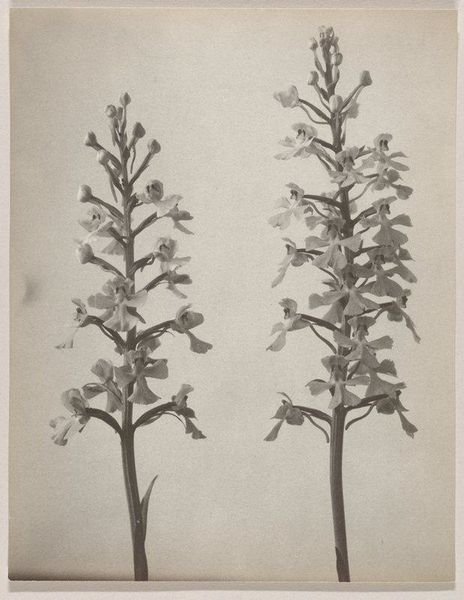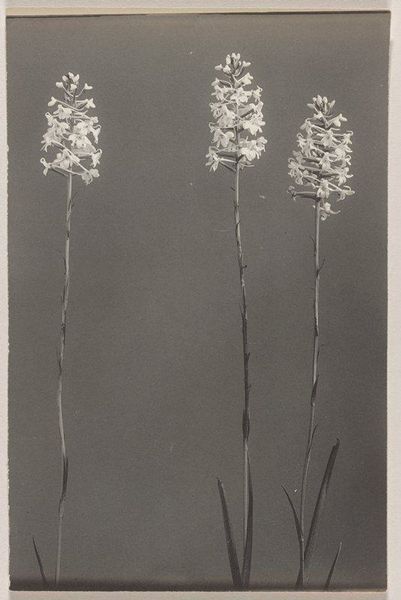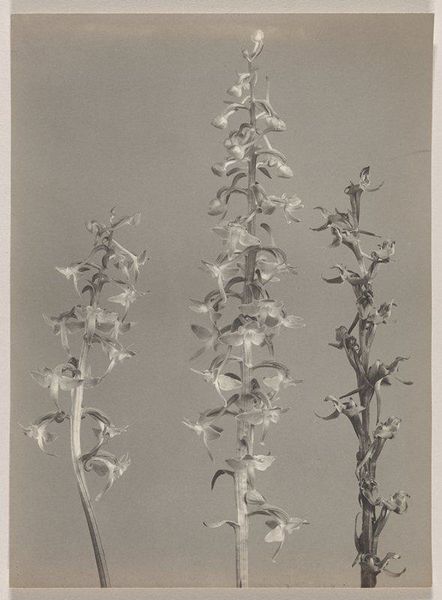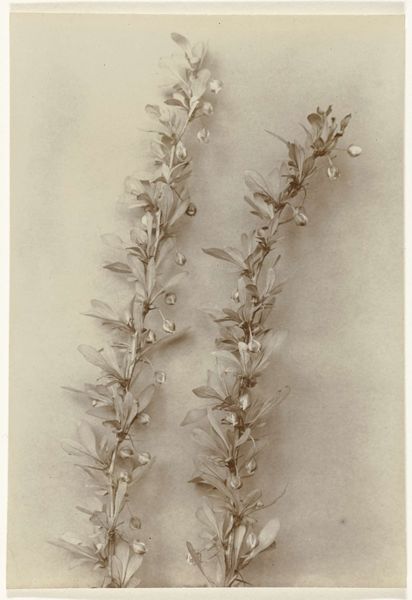
Habenaria blephariglottis- White Fringed Orchid and Habenaria ciliaris- Orange Fringed Orchid 1931
0:00
0:00
photography, gelatin-silver-print
#
photo of handprinted image
#
water colours
#
photography
#
gelatin-silver-print
#
united-states
#
botanical art
#
watercolor
Dimensions: 9 3/4 x 7 11/16 in. (24.77 x 19.53 cm) (image)9 15/16 x 7 3/4 in. (25.24 x 19.69 cm) (sheet)
Copyright: No Copyright - United States
Editor: So, here we have Edwin Hale Lincoln’s photograph "Habenaria blephariglottis - White Fringed Orchid and Habenaria ciliaris - Orange Fringed Orchid," from 1931. It's a gelatin silver print and watercolor, depicting three orchids against a soft background. It's quite serene, almost ghostly, with that grayscale and muted effect. What do you see in this piece beyond just a botanical study? Curator: It's easy to view this solely as documentation, but in its time, Lincoln’s work intersects with broader conversations around representation and control of the natural world. Consider how scientific exploration was often linked to colonial projects and how categorization was used as a way to assert power. How does this photographic representation relate to broader structures of environmental control, do you think? Editor: That’s an interesting point! It didn't occur to me initially, but I see the controlled presentation, almost like specimens pinned for observation. There's definitely an element of detached observation rather than an appreciation for their natural context. Does that detachment reflect a social trend of that time? Curator: Precisely! Think about the rise of scientific positivism. There's this sense of objectivity but it inevitably has a subjectivity built-in, too. Moreover, orchids have been historically associated with themes of sexuality and even exoticism. Consider what that adds to our understanding here. Does viewing them in such a sterile presentation negate or enhance such associations? Editor: It feels like both. The setting minimizes immediate sensuality but almost amplifies their constructed image – forcing them to stand for these broader issues, removed from anything else. Curator: Exactly. It becomes a study of image construction as much as botanical fact, a snapshot into a moment when scientific study became part of a bigger cultural shift. It reveals some implicit assumptions of looking *at* nature and reminds us of our entanglement with it. Editor: That's definitely a richer understanding than where I started! I will never look at flower pictures in quite the same way again. Curator: Me neither! Art helps us see how ideology shapes perception – something especially vital now, in the face of environmental challenges.
Comments
No comments
Be the first to comment and join the conversation on the ultimate creative platform.
